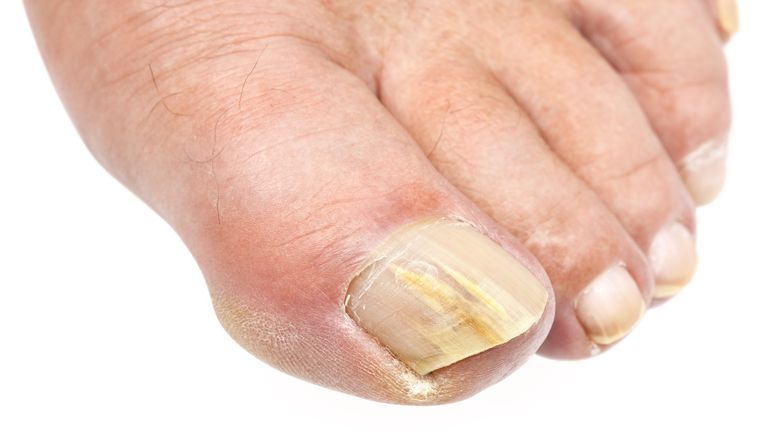Nail psoriasis and nail fungus have a lot of similarities, but one is a result of an infection and the other is inflammatory
Trying to figure out whether you have nail psoriasis or nail fungus may keep you on your toes. There are a lot of similarities between the two — and you can actually have both conditions at the same time — but they’re different from each other and require different types of treatment.
Psoriasis is a skin disorder in which your immune system overreacts, causing inflammation in your skin cells and forming scaly or red patches called plaques. Sometimes, these plaques can be itchy or painful. You can also develop psoriatic arthritis, which causes joint pain and swelling. There’s no cure for psoriasis, but there are ways to alleviate many of its symptoms and provide relief.
Fungal infections are different: They’re curable infections that occur when a bunch of fungi come into contact with your skin and get in between your nail and nail bed. These infections spread quickly and can be contagious. Often, you tend to pick them up in warmer, moist climates. Walking barefoot in wet, high-traffic areas like locker rooms, beside pools or even in garden soil may lead to infection, especially if you have an open wound like a cut or small scrape.
Both nail psoriasis and nail fungus can occur on your hands and feet; however, it’s much more common for nail psoriasis to occur on your fingers rather than your toes.
Symptoms of nail psoriasis
In virtually every case of nail psoriasis, someone will show other signs of psoriasis somewhere else on their body because it’s a full-body inflammatory disease.
Pitting
When you have psoriasis, sometimes the top of your nail tends to break down, causing pits, or small divots, to appear along the surface of your nail.
Redness
With psoriasis and fungus, sometimes your nail will become detached from your skin and lift on its own, creating a gap underneath your nail. This process is typically painless.
Salmon patches or oil drops
Other times, you’ll find red or dark brown splotches on the nail itself. This is often caused by the infiltration of white blood cells in an area that’s been inflamed.
Symptoms of nail fungus
While psoriasis is more commonly found on fingers, fungal infections typically occur on your toenails, and most often on a single toe unless it’s left untreated and spreads.
Athlete’s foot
This highly contagious fungal infection is a form of ringworm that causes an itchy, stinging or burning rash on your skin. Sometimes, the skin under your nails can become cracked, causing open wounds that may then become further infected, causing toenail fungus.
Discoloration
As with psoriasis, nails affected by fungus can become detached, causing severe discoloration in the nail. Often, you may find yellow or white streaks along the entirety of the nail that’s become detached, or in small lines.
Thickening of nails
Sometimes, your nail and the skin underneath it will thicken as a result of a fungal infection. This nail growth is not normal and will often be brittle and crack.
Treatment options for nail psoriasis and nail fungus
Since the root causes of nail psoriasis and nail fungus are different, the ways they’re both treated are also different.
If you’re noticing signs of nail psoriasis or nail fungus, you should see your healthcare provider, who can accurately diagnose exactly what it is you’re dealing with.
You may be able to seek out options such as toenail fungus laser removal.
source: Cleveland Clinic



